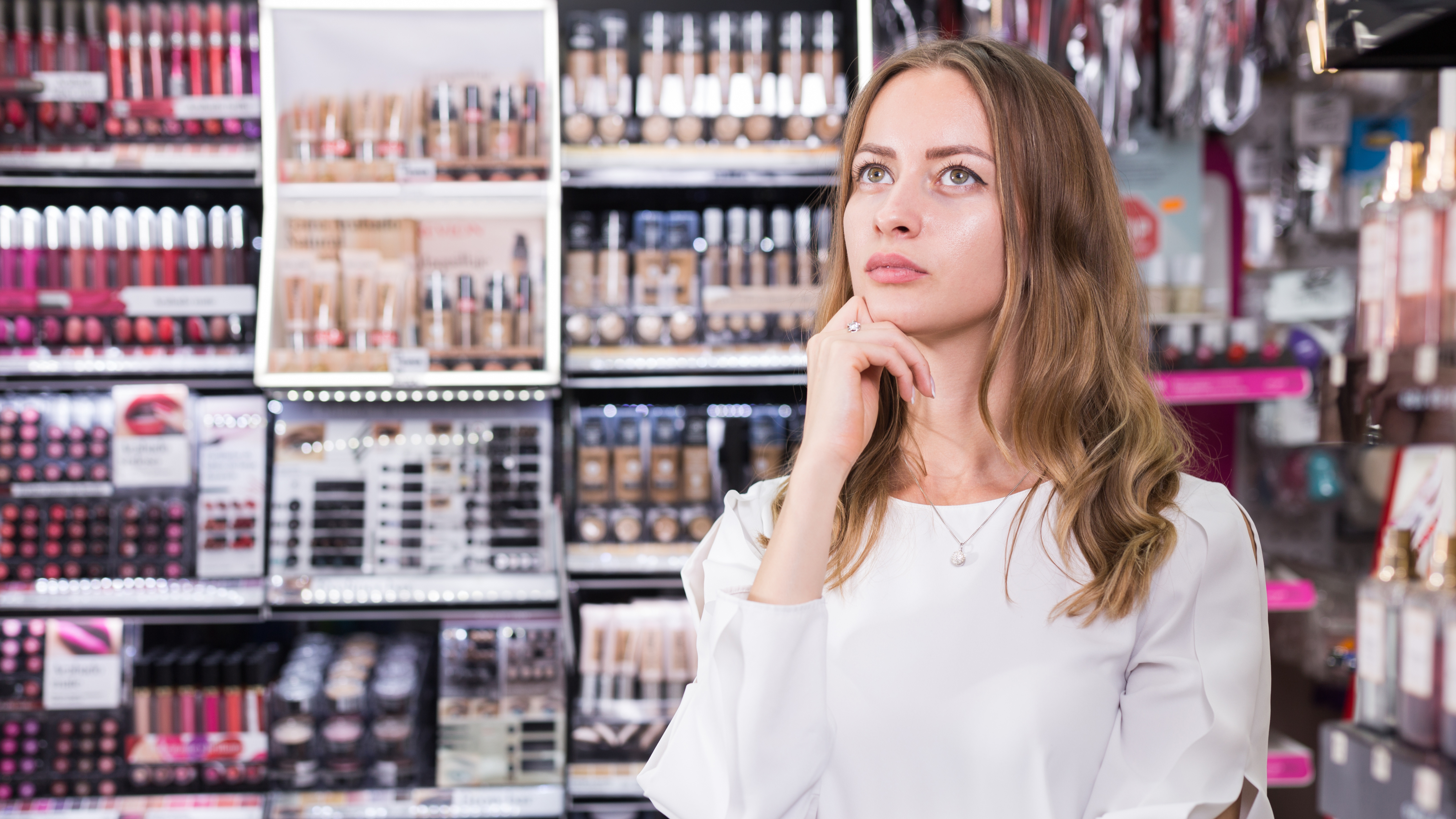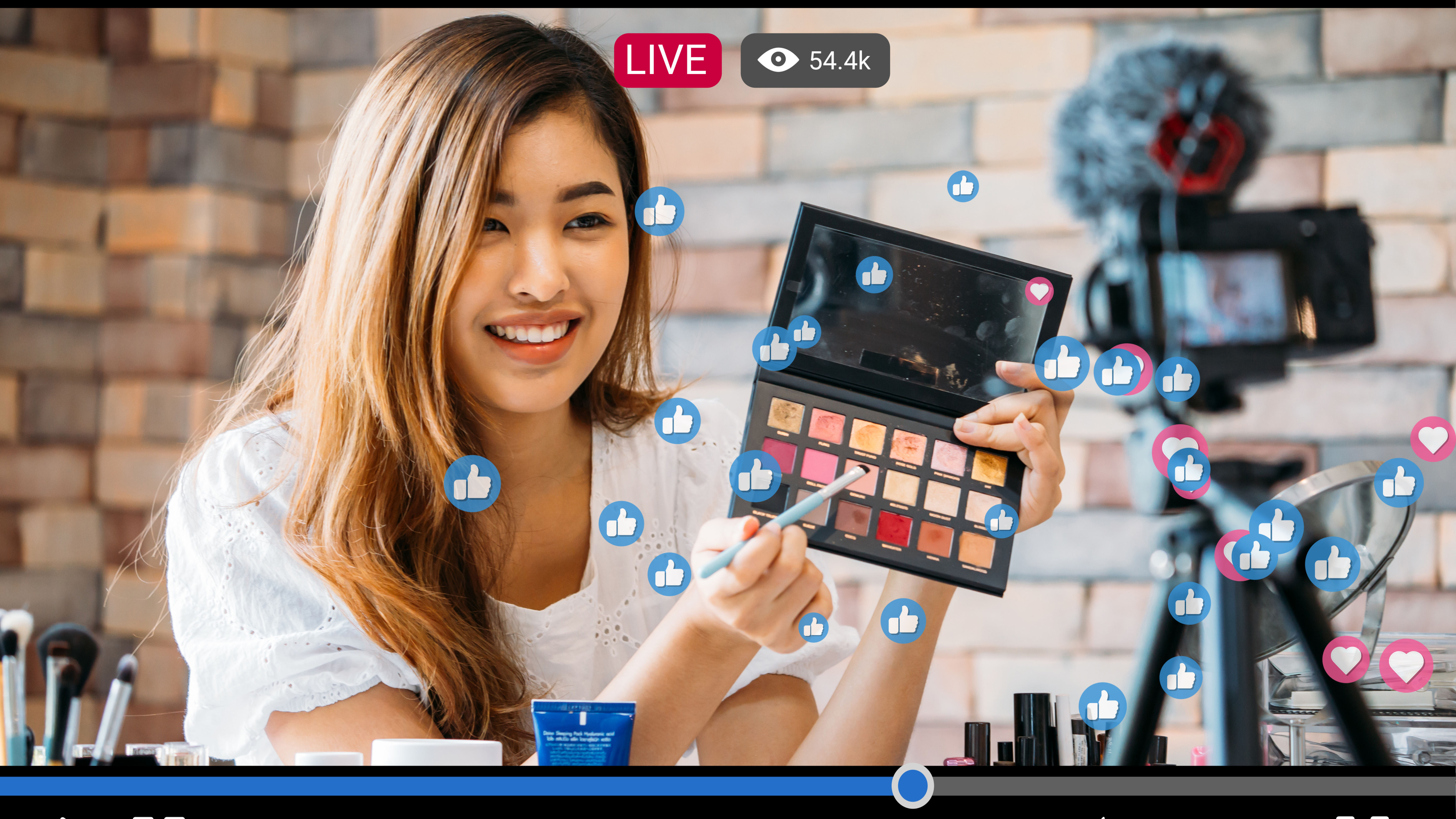The dynamic world of beauty and makeup is captivating and ever-evolving. It captures the essence of personal expression and the joy of transformation. For centuries, cosmetics have played an integral role in cultures worldwide, and today, they represent a multi-billion-dollar industry that intersects with health, fashion, and technology. With this immense growth and deep-seated cultural relevance, the cosmetics industry offers a plethora of opportunities for entrepreneurs eager to leave their mark.
However, as with any booming industry, the realm of cosmetics comes with its unique set of challenges. These range from navigating a densely populated market to staying abreast of rapidly changing trends, to addressing the increasing consumer demand for sustainable and ethical products. The beauty of these challenges? They all present opportunities – not just for growth, but for real, meaningful innovation.
Every entrepreneur who dives into this vibrant industry faces these hurdles head-on, armed with creativity, determination, and the drive to bring forth products that resonate with consumers. But recognizing these challenges is just the first step. In this article, we aim to delve deeper, shedding light on the most common obstacles in the cosmetics business and offering tangible, actionable solutions to navigate them successfully.
1. Standing Out in a Saturated Market
 Challenge: The cosmetics industry, being one of the most vibrant sectors today, is also among the most saturated. With new brands emerging seemingly overnight and established giants continuously innovating, the market landscape is both exciting and overwhelming. For newcomers and even for some established brands, differentiating oneself and gaining consumer attention can seem like a herculean task in this ocean of offerings.
Challenge: The cosmetics industry, being one of the most vibrant sectors today, is also among the most saturated. With new brands emerging seemingly overnight and established giants continuously innovating, the market landscape is both exciting and overwhelming. For newcomers and even for some established brands, differentiating oneself and gaining consumer attention can seem like a herculean task in this ocean of offerings.
Understanding the Market: To navigate this saturation, it's essential to first understand the depth and breadth of the market. There are myriad segments within the cosmetics industry - from luxury, high-end brands to budget-friendly, everyday products, from organic skincare lines to bold makeup palettes, and so on. Recognizing where your brand fits within this spectrum is the first step.
Solution:
-
Niche Focus: In a vast market, sometimes the key is to think smaller. Focusing on a specific niche or target audience can set a brand apart. This could mean catering to specific skin types, emphasizing unique ingredients, or aligning with particular lifestyle choices like vegan or eco-friendly products.
-
Authentic Brand Story: Consumers resonate with authenticity. Crafting a genuine brand story that communicates the 'why' behind your brand can build trust and loyalty. Perhaps it's a family recipe, a passion for sustainable beauty, or a commitment to specific community values – such stories connect on a personal level.
-
Engage with the Community: Establishing a strong digital presence where you engage directly with your audience can foster a sense of community. Listening to their feedback, addressing their concerns, and involving them in aspects of your brand (like product development or naming) can make them feel valued and more connected to your products.
-
Continuous Innovation: While maintaining brand consistency is vital, continuous innovation can keep the audience excited. This could mean seasonal product launches, limited-edition releases, or even just tweaking existing products based on customer feedback. Taking into account this, in Wholesale makeup we try always to have new products every month, so our clients can have different options for their business... Check out some of the most new recent products, click HERE!
Final Thought: Standing out doesn't always mean being the loudest or the most extravagant. Sometimes, it's about being genuine, consistent, and showing that you genuinely care about your customers. In the vast world of cosmetics, there's space for everyone, and with the right strategies, your brand can shine uniquely.
2. Regulatory Hurdles
 Challenge: The beauty and cosmetics industry isn't just about creating alluring products; it's deeply intertwined with health and safety. Given that cosmetics are applied directly to the skin and, in some cases, around sensitive areas like the eyes and mouth, there's a heightened emphasis on ensuring products are safe for consumer use. Regulatory bodies across the world have established stringent standards and guidelines that cosmetic products must adhere to before they can be introduced to the market.
Challenge: The beauty and cosmetics industry isn't just about creating alluring products; it's deeply intertwined with health and safety. Given that cosmetics are applied directly to the skin and, in some cases, around sensitive areas like the eyes and mouth, there's a heightened emphasis on ensuring products are safe for consumer use. Regulatory bodies across the world have established stringent standards and guidelines that cosmetic products must adhere to before they can be introduced to the market.
Understanding the Regulatory Landscape: Navigating these regulatory requirements can be complex, as they often differ from country to country. While some nations might have exhaustive lists of banned ingredients, others may focus more on manufacturing processes or labeling standards. Moreover, as scientific research progresses and we learn more about specific compounds, regulatory guidelines are continuously evolving.
Solution:
-
Stay Informed: One of the most fundamental steps is to be aware of the regulations specific to the regions where you plan to sell. Subscribing to industry newsletters, joining professional associations, and frequently reviewing the guidelines set by regulatory bodies can help stay updated.
-
Invest in Testing: Before launching any product, thorough testing, both for safety and efficacy, is crucial. This may involve dermatological tests, stability tests, and, in some cases, clinical trials. Such rigorous testing not only ensures regulatory compliance but also builds consumer trust.
-
Leverage Experts: Consider hiring or consulting with regulatory experts, especially when expanding to new markets. These professionals can offer insights into local regulations, helping avoid potential pitfalls and ensuring smooth product launches.
-
Transparent Communication: Should a product face regulatory scrutiny, transparency is vital. Openly communicating with both regulatory bodies and consumers can maintain trust and demonstrate the brand's commitment to safety and integrity.
-
Sustainable and Ethical Considerations: As the industry grows, there's a rising demand for cruelty-free and sustainably-sourced cosmetics. While these may not always be regulatory requirements, they're becoming industry standards that can influence consumer purchasing decisions. Check out some cruelty-free products we have in Wholesale Makeup, click HERE!
Final Thought: Regulatory compliance is not just a legal obligation; it's a testament to a brand's dedication to delivering safe, high-quality products. By proactively addressing these hurdles, brands can ensure their longevity in the market and foster a lasting, trusting relationship with their consumer base.
3. Supply Chain Issues
 Challenge: The cosmetics industry, with its intricate formulations and packaging needs, relies heavily on a complex supply chain. From sourcing raw materials to the manufacturing, packaging, and distribution of the final product, each step presents its own challenges. Global disruptions, such as pandemics, geopolitical tensions, or environmental events, can strain or even break parts of this chain, leading to product shortages, increased costs, or quality issues.
Challenge: The cosmetics industry, with its intricate formulations and packaging needs, relies heavily on a complex supply chain. From sourcing raw materials to the manufacturing, packaging, and distribution of the final product, each step presents its own challenges. Global disruptions, such as pandemics, geopolitical tensions, or environmental events, can strain or even break parts of this chain, leading to product shortages, increased costs, or quality issues.
Understanding the Supply Chain Dynamics: Before diving into solutions, it's crucial to grasp the intricacies of the cosmetics supply chain. For instance, certain ingredients might be sourced from specific regions due to their unique climatic conditions or biodiversity. Packaging, often a key differentiator in cosmetics, can have its own set of suppliers, each with their constraints.
Solution:
-
Diversify Suppliers: Avoid over-reliance on a single supplier or region. By diversifying your supplier base, you're better insulated against disruptions. If one source faces issues, you have others to fall back on.
-
Build Strong Relationships: Beyond just transactional dealings, building genuine, long-term relationships with suppliers can pay dividends. Suppliers are more likely to support brands they have a strong relationship with during tough times, be it with flexible payment terms or prioritizing deliveries.
-
Inventory Management: Invest in modern inventory management systems. Real-time tracking of stock levels, shelf-life monitoring, and predictive analytics can help anticipate issues and allow for proactive solutions, such as adjusting production schedules or sourcing alternative materials.
-
Scenario Planning: Engage in regular scenario planning sessions. Anticipate potential disruptions, whether they're geopolitical, environmental, or economic, and devise strategies to address them. This proactive approach can significantly reduce reactive, last-minute scrambling.
-
Transparent Communication: If supply chain disruptions affect product availability or lead to changes in formulations, communicate openly with customers. Consumers appreciate transparency and understanding the reasons behind product changes or shortages can foster trust.
Final Thought: While the cosmetics industry's supply chain can be intricate and susceptible to disruptions, effective planning and relationship-building can create a resilient, adaptable system.
4. Keeping Up with Trends
 Challenge: The world of cosmetics is in a constant state of flux. Driven by celebrity influence, social media, cultural shifts, and technological advancements, trends in the beauty industry can emerge overnight and become outdated just as quickly. For brands, staying relevant in such a fast-paced environment can be daunting. Missing out on a significant trend or failing to innovate can lead to dwindling market share and lost opportunities.
Challenge: The world of cosmetics is in a constant state of flux. Driven by celebrity influence, social media, cultural shifts, and technological advancements, trends in the beauty industry can emerge overnight and become outdated just as quickly. For brands, staying relevant in such a fast-paced environment can be daunting. Missing out on a significant trend or failing to innovate can lead to dwindling market share and lost opportunities.
Understanding Trend Dynamics: Trends in the cosmetics industry can be broadly categorized into two: short-term fads and long-term shifts. While fads like a particular makeup look or product might be temporary, shifts, such as the move towards organic or sustainable products, tend to have lasting impacts. Distinguishing between the two is vital for effective strategy planning.
Solution:
-
Active Social Media Engagement: Social media platforms, especially visually-driven ones like Instagram, TikTok, and Pinterest, are often the birthplaces of new beauty trends. Regular engagement, from following influential beauty gurus to monitoring trending hashtags, can offer a pulse on what's gaining traction.
-
Feedback Loops: Creating strong feedback mechanisms with your customer base can offer invaluable insights. Whether it's through online reviews, direct surveys, or focus group discussions, understanding what consumers want can help steer product development in the right direction.
-
Collaborations: Partnering with influencers, makeup artists, or celebrities can provide a fresh perspective and tap into their follower base. Such collaborations often lead to limited edition products that capitalize on current trends while bringing brand awareness to new audiences.
-
Continuous R&D: Allocate resources for continuous research and development. An agile R&D team can quickly adapt to emerging trends, allowing for timely product launches that resonate with current market demands.
-
Educational Initiatives: Instead of just following trends, brands can position themselves as trendsetters by educating consumers. Hosting workshops, webinars, or creating informative content can not only establish the brand as an industry thought-leader but can also guide the narrative.
-
Sustainability and Inclusivity: Recognize that some trends, especially those revolving around sustainability and inclusivity, are here to stay. Committing to eco-friendly practices or broadening product ranges to cater to diverse skin tones isn't just trendy; it's a forward-thinking business strategy.
Final Thought: While chasing every trend might not be feasible or even advisable, being attuned to the industry's pulse is non-negotiable. By adopting a proactive and adaptive approach, brands can not only keep up with trends but often shape them, leading the way in innovation and customer satisfaction.
5. Evolving Consumer Expectations
 Challenge: As consumers become more knowledgeable and exposed to global trends, their expectations from cosmetic brands have evolved. They demand transparency, ethical practices, personalized experiences, and high-quality products – all at a competitive price point. Catering to these heightened expectations while maintaining profitability and brand integrity can be a juggling act.
Challenge: As consumers become more knowledgeable and exposed to global trends, their expectations from cosmetic brands have evolved. They demand transparency, ethical practices, personalized experiences, and high-quality products – all at a competitive price point. Catering to these heightened expectations while maintaining profitability and brand integrity can be a juggling act.
Understanding Modern Consumers: Today's consumer is tech-savvy, socially conscious, and value-driven. They're not just buying a product; they're investing in a brand's values, ethos, and story. With information at their fingertips, they're more informed and discerning in their choices.
Solution:
-
Ethical Stances: Taking stands on ethical issues, be it cruelty-free testing, sustainable sourcing, or fair labor practices, resonates with modern consumers. It's not just about PR; it's about aligning brand operations with its values.
-
Personalization: With advancements in tech, offering personalized solutions, whether it's custom product formulations or tailored beauty regimens, can set a brand apart. Such initiatives show consumers that the brand sees and values their unique needs.
-
Engaging Storytelling: Modern consumers connect with stories. Share your brand's journey, its challenges, victories, and vision, to engage and resonate with your audience.
Final Thought: The modern consumer's expectations are not just about the product's efficacy. It's a holistic experience that encompasses the brand's values, its story, and the personalized touch it adds. Brands that recognize and cater to this holistic view stand out and build loyal customer bases.
6. Digital Transformation and E-commerce
 Challenge: The digital revolution has transformed how consumers discover, evaluate, and purchase cosmetic products. With the proliferation of e-commerce and the decline of traditional brick-and-mortar shopping, brands face the challenge of adapting to this new digital-first landscape.
Challenge: The digital revolution has transformed how consumers discover, evaluate, and purchase cosmetic products. With the proliferation of e-commerce and the decline of traditional brick-and-mortar shopping, brands face the challenge of adapting to this new digital-first landscape.
Understanding the Digital Landscape: The digital realm is vast. From social media marketing, influencer partnerships, and online reviews to e-commerce platforms and direct-to-consumer models, there's a multitude of touchpoints where brands can engage with consumers.
Solution:
-
Robust Online Presence: An intuitive, user-friendly website is a must. It should not only be a point of sale but also an informative hub that educates and engages visitors.
-
Leveraging Social Media: Social platforms offer a two-fold benefit – marketing and direct engagement. Regular, value-driven content coupled with responsive customer service can amplify brand visibility and loyalty.
-
Data-Driven Decision Making: E-commerce platforms offer a goldmine of consumer data. Analyzing shopping patterns, feedback, and browsing behaviors can offer insights that drive product development, marketing strategies, and sales initiatives.
-
Seamless Shopping Experience: Ensure the online shopping experience is smooth, from browsing to checkout. Also, focus on after-sale services like easy returns, customer support, and feedback mechanisms.
Final Thought: Embracing digital transformation isn't an option; it's a necessity. However, it's not about being present everywhere, but about being impactful where you are. Brands that successfully integrate the digital realm into their strategy can not only boost sales but also create meaningful and lasting relationships with their consumers.
In an ever-evolving world, the cosmetics industry faces challenges that demand both adaptation and foresight. Brands that prioritize understanding these dynamics and proactively address them are best positioned for enduring success. The journey through the world of beauty and cosmetics is not merely about products, but about embracing change, driving innovation, and consistently delivering value to the discerning consumer. As the landscape shifts, one thing remains clear: staying informed, adaptable, and customer-centric are the cornerstones for thriving in this vibrant industry.



